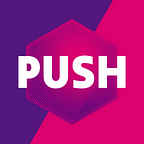The Power of Small Change
A case study on how it doesn’t take a revolution to achieve big results. This article has been contributed by Annachiara Foschi from our partner intive.
Nowadays, there are hundreds of e-commerce apps in Germany; only last year they generated a total of over 83 billion Euros in revenues. Users of all ages are starting to use them for their unquestionable advantages: shopping can be done from virtually anywhere and items arrive a few days later, directly at home. Contactless, quick, effective.
Even before COVID-19 hit the world, many users were shopping online; when the pandemic started changing life as we know it, e-commerce apps usage grew exponentially. Online shopping was the only type of shopping which could be done safely and without risks. Businesses all over had to adapt to the new normal.
Having an e-commerce app does not necessarily guarantee sales. Brands have to make sure their apps are not only functional, but also easy to use and smooth when it comes to the user experience. The app also has to reflect the brand and provide the same type of comfort it would give to customers in a physical shop. Finding and creating this balance is far from easy.
This was exactly the problem intive was presented some time ago: a successful German brand was not too happy with their app’s performance in sales. It was good, but not enough to bring in the projected and expected revenues.
An initial, quick survey told us that the majority of the users did have knowledge of the app but just decided not to use it.
Like 95% of the time, the problem was lying in the same old place: the app UX was not ideal.
The next logical step was to then carry out some user research and to try and find the root of said problem. We carried out a questionnaire where many general questions about the app were asked; this was to identify the bottleneck in the user experience. We were looking for answers to a few simple questions: Where does the user get stuck? Where do they lose interest and drop out of the app? Is there anything which is too complicated or unclear which prompts the users to give up and just abandon their quests? In parallel, we did some funnel analysis and looked at heatmaps, in order to investigate the user experience. Suddenly we realised one pivotal thing: the majority of the users would browse in the home page and the profile page without any problems, but after a few moments on the products list page, they would drop out. The products list page has a lot of elements in it, so the problem was not exactly solved yet. We needed to dig a bit deeper but at least we had managed to eliminate a big chunk of other pages. This is when we started looking at the answers in the questionnaire and some interesting information started to emerge.
The answer lies within, drumrolls… filters!
Yes, such a small feature in a page full of content can have a gigantic impact on how users enjoy (or in this case rather not) their digital shopping experience. The app page would prominently present filters which we found out were not relevant for the users. For example clothes sizes and shoe numbers are quite important for the users, yet they were not in the top filters on the page. One had to open a drop down menu and find them and then insert their preferences. Conversely, the style of clothes (such as elegant, sporty, basic…) was not even in the top 10 of the most important filters for the users but there it was, right on top of the product list page, clearly displayed. This was, needless to say, a game changer. We studied the questionnaire and drafted more tests, this time specifically focused on the filtering feature. Our hypotheses were confirmed. Not only did we realise that users were frustrated with the filters being displayed in the app but they were also not too happy about having to insert their filters’ preferences every time they entered the app.
The product and design team got together and started a brainstorming session which led to a new plan: a redesign process and a new feature to be added to the product backlog. The most important filters were made prominent and shifted to the top while the whole filter navigation was rendered more intuitive and easy to use with clearer icons and bigger buttons. On top of that, we added the possibility of saving user preferences to the users’ profile so that they wouldn’t have to adjust filters every time they entered the app.
This approach had a heavy impact on the way people use the app. App usage increased by 20% and the app downloads saw an increase of 15% in the following three months. Moreover, for the first time after six months, sales projections were met.
All in all, the changes were small but the difference was huge; user research, investigations and a thorough process of elimination allowed us to narrow down the problem. The creative solution came just by looking at the user requests and listening to their needs. Design does not need to be a huge revolution or a mind-blowing solution: it just needs to make sense for your users.
